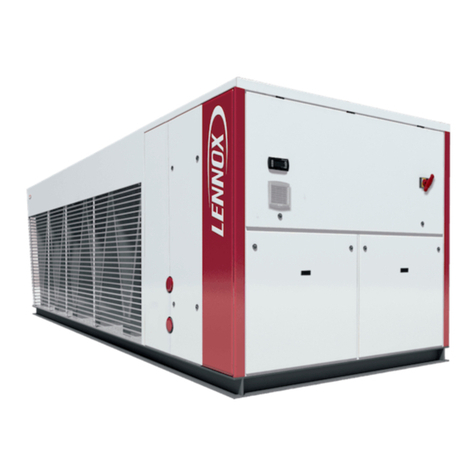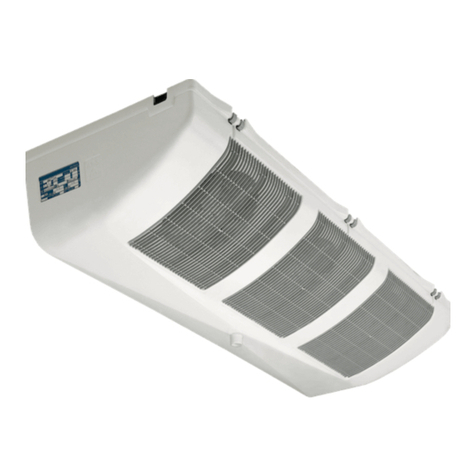
INDEX
1.
PRODUCT SPECIFICATIONS................................................................................................................................... 3
1.1.
DESCRIPTION ...................................................................................................................................................... 3
1.2.
DESIGNATION ...................................................................................................................................................... 4
1.3.
OPERATING LIMITS ............................................................................................................................................. 4
1.4.
TECHNICAL CHARACTERISTICS AND DIMENSIONS ....................................................................................... 4
1.5.
EQUIPMENT DESIGN........................................................................................................................................... 5
2.
UNIT PREPARATION FOR USE ............................................................................................................................... 5
2.1.
TRANSPORT......................................................................................................................................................... 5
2.2.
IMPORTANT SAFETY WARNINGS ...................................................................................................................... 6
2.3.
INDICATIONS........................................................................................................................................................ 7
2.4.
INSTALLING THE UNIT......................................................................................................................................... 9
2.5.
COMPULSORY SPACE TO BE LEFT AROUND THE UNIT............................................................................... 10
2.6.
ASSEMBLY.......................................................................................................................................................... 10
2.7.
PROTECTIVE DEVICES AND SAFETY MEASURES ........................................................................................ 11
2.8.
DISPOSING OF PACKAGING............................................................................................................................. 11
2.9.
CONTROLS, ADJUSTMENTS AND CHECKS TO BE MADE............................................................................. 11
3.
OPERATING INSTRUCTIONS ................................................................................................................................ 11
3.1.
CONNECTING THE UNIT TO EXTERNAL POWER SOURCES........................................................................ 11
3.2.
ELECTRICAL POWER CONNECTION ............................................................................................................... 12
3.3.
ADJUSTMENT AND CONTROL.......................................................................................................................... 12
3.4.
COLD ROOM LIGHT ........................................................................................................................................... 13
3.5.
CONTROL DEVICE ............................................................................................................................................. 13
3.6.
CONTROL FUNCTIONS ..................................................................................................................................... 14
3.7.
INDICATOR LIGHTS ........................................................................................................................................... 15
3.8.
ALARM SIGNALS ................................................................................................................................................ 15
3.9.
RESETTING THE ALARMS................................................................................................................................. 15
3.10.
PAL/CA ALARM................................................................................................................................................... 16
3.11. P1, P2, P3, P4 ALARM ........................................................................................................................................ 18
3.12.
dA ALARM ........................................................................................................................................................... 19
3.13.
COMPRESSOR ALARM DOES NOT START ..................................................................................................... 19
3.14.
PARAMETER LIST .............................................................................................................................................. 20
3.15.
EXTERNAL COMMUNICATION.......................................................................................................................... 20
3.16.
STARTING UP THE UNIT ................................................................................................................................... 21
3.17.
DIAGRAM OF THE UNIT ELECTRICAL SYSTEM.............................................................................................. 21
4.
MAINTENANCE AND CLEANING ........................................................................................................................... 21
4.1.
MAINTENANCE AND REPAIR OF THE UNIT .................................................................................................... 21
4.2.
ORDINARY MAINTENANCE............................................................................................................................... 22
4.3.
PERIODICAL AND PREVENTIVE MAINTENANCE............................................................................................ 22
4.4.
SERVICING TO BE CARRIED OUT BY QUALIFIED STAFF ............................................................................. 22
4.5.
TECHNICAL PROBLEMS.................................................................................................................................... 23
4.6.
FAILURE ANALYSIS ........................................................................................................................................... 24
4.7.
HOW TO ORDER SPARE PARTS ...................................................................................................................... 25
4.8.
SCRAPPING THE UNIT ...................................................................................................................................... 25





























